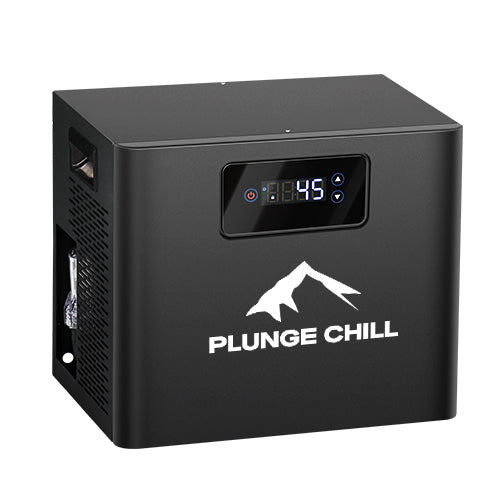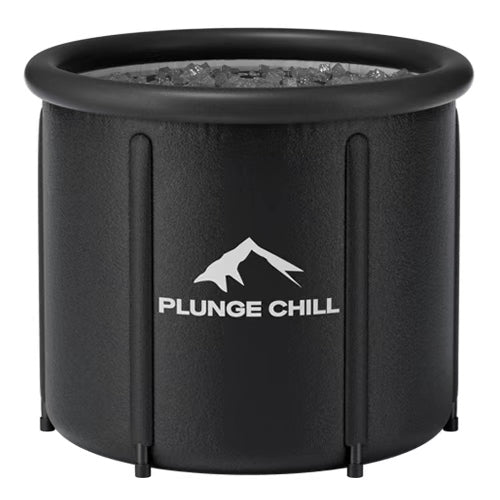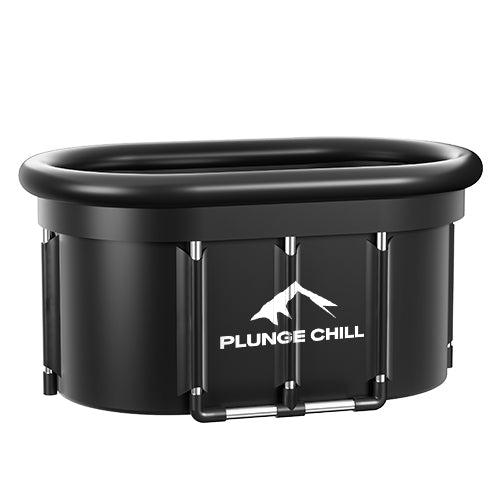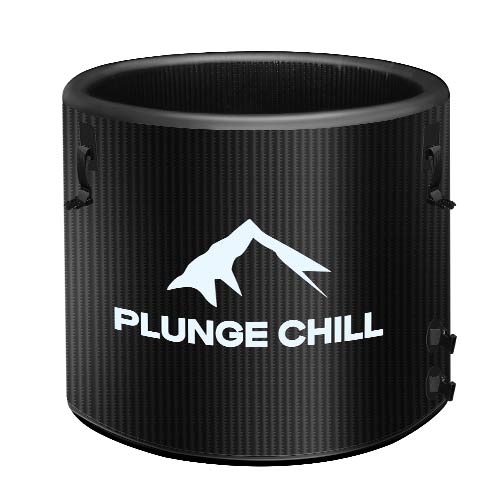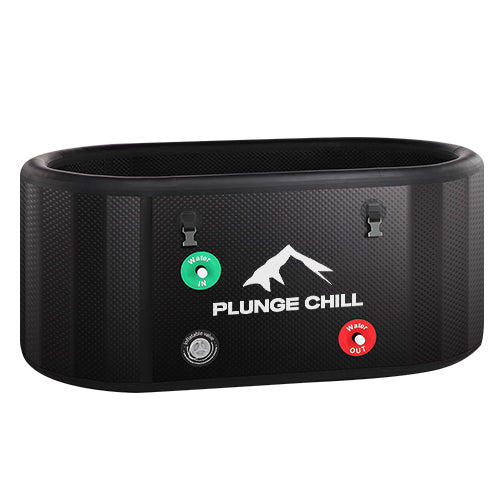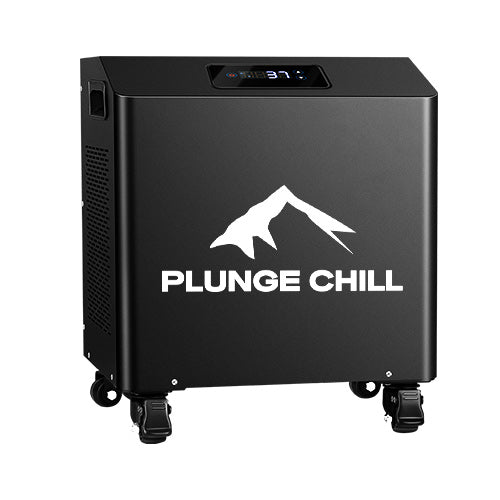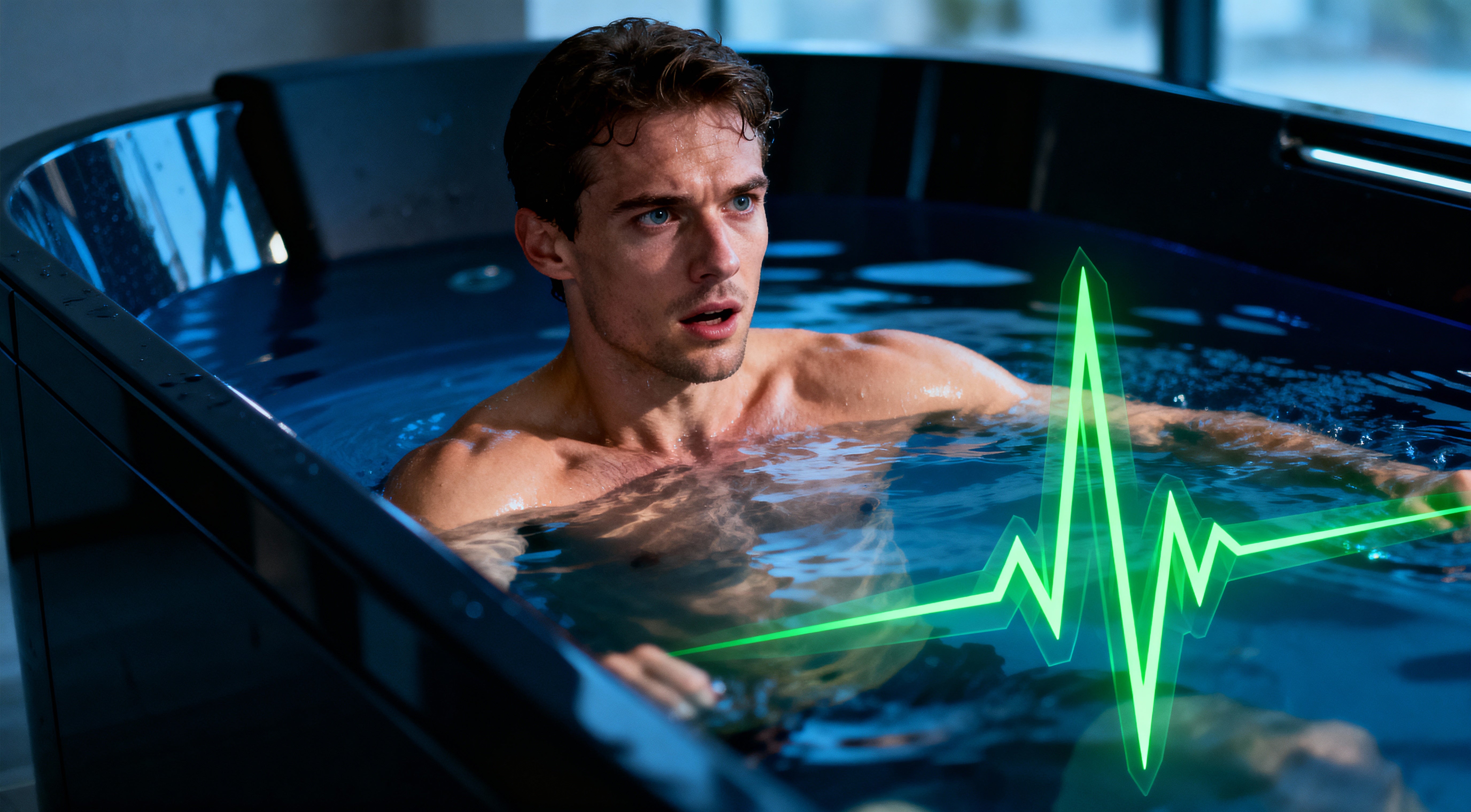Cold baths, ice plunges, and cold showers have exploded in popularity among athletes and wellness enthusiasts. As a sports rehabilitation specialist and strength coach who also evaluates cold plunge products, I work at the intersection of physiology and practical execution. The question I am asked most is simple and important: what does cold exposure do to blood pressure, and who stands to benefit or be harmed? This article translates the science into actionable guidance, grounding every recommendation in reputable sources while noting where evidence is mixed or preliminary. You will find clear definitions, realistic pros and cons, safety and buying tips, and specific considerations for people with hypertension, arrhythmias, or cardiac history. I will also highlight what most guides miss, where studies disagree, and how to navigate those uncertainties responsibly.
Blood Pressure, in Plain Terms
Blood pressure is the force blood exerts on artery walls as the heart pumps. Systolic pressure reflects the force during a heartbeat, while diastolic is measured between beats. The vasculature constricts or dilates constantly to maintain perfusion and temperature. Cold exposure narrows blood vessels in the skin and extremities (peripheral vasoconstriction), an adaptive heat-conserving response. Vasoconstriction increases total peripheral resistance and can acutely raise blood pressure and the rate-pressure product, particularly during the first moments of immersion when the “cold shock response” peaks. As you rewarm, vessels dilate and blood redistributes, typically normalizing blood pressure again.
In practice, what matters is timing, context, and individual risk. Cold exposure in well-controlled environments is not the same as falling into a winter river. Likewise, a trained winter swimmer’s cardiovascular system does not respond like a novice’s or a patient’s with coronary disease, heart failure, or uncontrolled hypertension.

What Cold Baths Do to the Cardiovascular System
The first minute of a plunge is dominated by the cold shock response. Skin thermoreceptors trigger a spike in breathing, heart rate, and blood pressure. The sympathetic nervous system floods the circulation with catecholamines, and the body shunts blood centrally to protect vital organs. This is the most hazardous window for those with cardiovascular disease and for unhabituated users, because a sudden gasp underwater can precipitate drowning and the acute hemodynamic surge stresses the heart. These effects are emphasized by the American Heart Association and summarized by Case Western Reserve University.
If you remain calm and breathe slowly with head above water, the second-to-tenth minute period tends to be more stable. Breathing control attenuates the acute spike, and many people report a sense of control returning as the nervous system rebalances. Cold-induced vasoconstriction remains, but some parameters may begin drifting back toward baseline, especially if the immersion is short and well-tolerated. Small studies in healthy subjects also suggest changes in vascular shear stress patterns during and after cold water immersion, a plausible mechanistic link to cardiovascular signaling, as noted by University of Oregon and the Journal of Thermal Biology.
After you exit, rewarming and reperfusion dominate. Most healthy individuals see blood pressure and heart rate ease back toward starting levels within minutes. Heart Research UK emphasizes the importance of gradual rewarming to reduce afterdrop and to restore dexterity and judgment, particularly in outdoor environments.

Do Cold Plunges Raise or Lower Blood Pressure?
The most honest answer is that both patterns have been documented, depending on when and how you measure, who is being studied, and what protocol is used.
In the very acute phase, sudden cold exposure raises heart rate and blood pressure. This is the cold shock response described by the American Heart Association, Harvard Health, Houston Methodist, and Case Western Reserve University. The risk is magnified if the head goes under and an involuntary gasp occurs.
During or shortly after a controlled session, some studies in healthy young adults have observed reductions in heart rate and blood pressure relative to baseline, alongside improved mood several hours later. University of Oregon reported significant reductions after a single fifteen-minute immersion with ultrasound evidence of altered shear stress, although the study was small and limited to college students.
In longer-term observations, blood pressure often looks unchanged when measured outside the acute window. A PRISMA-guided editorial in Acta Physiologica reviewing healthy nonathletes noted that systolic and diastolic pressures were not altered in the long term, though protocols were heterogeneous and many studies were small. An older investigation of winter swimmers found the biggest rise occurred while undressed in cold air before immersion, with no further systolic increase during the ice-cold swim and return to baseline within about four minutes after, suggesting the surrounding conditions and sequence matter.
These nuanced time courses explain why people can cite both “raises BP” and “lowers BP” and still be partially correct.
To help visualize timing, here is a compact summary:
|
Phase or context |
Typical BP direction |
Why it happens |
Representative sources |
|
First 10–60 seconds of entry |
Upward spike |
Cold shock: sympathetic surge, vasoconstriction, gasp reflex |
American Heart Association; Case Western Reserve University; Harvard Health |
|
Controlled immersion minutes 2–10 |
Variable to stable |
Breathing control and habituation blunt the spike; peripheral blood flow remains reduced |
Heart Research UK; Journal of Thermal Biology |
|
Shortly after exit |
Tends toward baseline |
Rewarming and redistribution; afterdrop risk if rewarming is poorly managed |
Heart Research UK; Mayo Clinic Health System |
|
Long-term training effect |
Often unchanged |
Mixed literature; protocols and populations differ |
Acta Physiologica editorial |
|
Special case: winter swimmers waiting in cold air pre-immersion |
Upward before water, less during swim |
Cold air exposure while undressed elevates systolic pressure; water did not add further rise in one cohort |
PubMed Central study of winter swimmers |
These patterns reconcile apparent contradictions across sources by anchoring each claim to a phase of exposure and a population studied.

Safety First: Who Needs Medical Clearance or Should Avoid Cold Plunges
Cold plunges are not appropriate for everyone. People with cardiovascular disease, known arrhythmias, uncontrolled hypertension, peripheral artery disease, Raynaud’s phenomenon, or significant respiratory disease should seek medical clearance or avoid cold plunges. This caution is consistent across Harvard Health, the American Heart Association, the American Lung Association, and Houston Methodist. Those on beta blockers or other cardiovascular medications should be especially cautious, as medication-altered heart rate and vascular tone can complicate adaptation to cold shock. Advanced age, pregnancy, neuropathy, and poor circulation add layers of risk. Never plunge alone, and do not combine with alcohol; impaired thermoregulation and judgment amplify hazards.
Performance and Recovery: Where Cold Helps and Where It Hurts
Cold exposure reliably blunts swelling and attenuates soreness after hard efforts, which is why post-exercise cold therapy is ubiquitous in sport.
Yet the same mechanisms can dampen training adaptations in strength and hypertrophy blocks by slowing protein synthesis and blunting anabolic signaling, a concern echoed by Case Western Reserve University, Harvard Health, and the Mayo Clinic Health System. Endurance training appears less affected by post-session cold, and for athletes peaking for competition, short-term recovery benefits can outweigh small adaptation costs. The broader wellness claims—sleep, immunity, mood—are suggestive but limited by small, heterogeneous studies. Harvard Health summarized a synthesis of studies as showing small, temporary benefits. Regular exercise remains a more proven way to improve heart health, mood, and blood pressure than cold exposure alone.

Practical Protocol: How I Progress Clients Safely
In my practice, I treat cold as a potent stimulus that must be dosed carefully. I begin with cooler showers at the end of a warm shower, typically thirty seconds of controlled breathing while letting water hit the upper back and neck to simulate the first-contact shock. Once clients demonstrate control, I move them to water between 50 and 59 degrees Fahrenheit for brief immersions, keep the head above water, and coach slow, diaphragmatic breathing to avoid hyperventilation. Early sessions are generally two to three minutes, progressing by thirty to sixty seconds per week toward five to ten minutes as tolerance improves. We always exit deliberately, dry off thoroughly, add layers, move gently, and use warm fluids to rewarm without lightheadedness. These parameters align with practical guidance from IceTubs and the Mayo Clinic Health System.
For individuals with blood pressure concerns, I add objective monitoring: an automated cuff reading before entry, a check around one minute in if practical, and a reading three to five minutes after exit. If systolic pressure is uncontrolled at baseline or symptoms such as chest pain, dizziness, confusion, or persistent numbness appear, I stop the session and reassess. When training goals involve strength and hypertrophy, I generally avoid routine cold plunges immediately after lifting; if a client insists, we shift the plunge to unrelated rest days to protect adaptation.

Hypertension, Arrhythmias, and the Special Case of Autonomic Conflict
The cold shock response and the diving response are powerful reflexes that can fire at the same time. Cold shock produces tachycardia and hypertension; diving response, triggered by facial cooling and breath-holding, slows heart rate and drives vagal dominance. When both are strong simultaneously, a phenomenon called autonomic conflict can provoke arrhythmias, including bradyarrhythmias and junctional rhythms, even in healthy people, as reviewed on PubMed Central by physiologists studying immersion fatalities. The risk appears highest with rapid submersion in cold water below about 59 degrees Fahrenheit while attempting breath-hold. Practically, this is why I coach head-above-water entry, avoidance of breath-holding, and calm, controlled exhalation through the first minute.
Hypertension deserves special attention. Cold-induced vasoconstriction can acutely raise blood pressure, which poses obvious risk for untreated or poorly controlled hypertension. Consumer-facing sources like Morozko’s blog argue that hypertension is an underemphasized contraindication; while that piece is not a peer‑reviewed guideline, its core mechanism aligns with cardiology basics and cold-exposure literature. University groups studying cold exposure have shown meaningful systolic rises in hypertensive men during short cold-air exposures. If you have hypertension, get it well controlled and measured prior to experimenting with cold, and consider supervised protocols or medical clearance.

Heat as a Counterpoint: What Hot Baths Do to Blood Pressure
Heat drives vasodilation, the physiological opposite of cold-induced vasoconstriction. In treated hypertensive and normotensive adults, a ten-minute hot tub at about 122 degrees Fahrenheit lowered both systolic and diastolic blood pressure during immersion with a mild rise in heart rate. Values drifted back toward baseline within ten minutes after exiting in that cohort, without severe symptoms, as documented in a study archived at PubMed Central. This contrast does not mean you should jump straight from ice to very hot water. Rapid thermal transitions can cause lightheadedness and vasovagal symptoms. Rewarm gradually and avoid extremes if you have any cardiac or autonomic concerns.

Buying and Care Tips from a Product Reviewer’s Perspective
For home setups, precise temperature control makes or breaks the experience. Units that hold a stable setpoint near fifty to fifty‑nine degrees Fahrenheit help you dose consistently and avoid overshooting into unsafe cold. Robust filtration and sanitation are essential if you share the unit or plan frequent use; effective filters and simple maintenance routines reduce skin and infection risks. Size matters for comfort and compliance; taller or broader athletes need enough depth to submerge up to the chest without curling forward. If your budget is tight, a traditional ice bath can work, but it is more labor-intensive, less consistent in temperature, and costlier in ice over time compared with an insulated unit. These points are consistent with consumer guidance outlined by IceTubs and reflect what I have learned testing multiple chassis in busy clinics.
I also advise planning your rewarming station before you plunge. Keep dry towels, warm clothing, and a stable place to sit within reach to minimize fumbling when your dexterity dips.
Where this guidance moves beyond the cited sources—energy use, noise levels, build materials, or service support—I am drawing on reviewer experience rather than published trials. My confidence on those operational features is high from repeated product testing, but they are not medical claims and do not substitute for clinical advice.
What Most Guides Miss
Several nuances rarely surface in quick takes. Here they are compactly, with the evidence origin and a way to check them yourself.
|
Insight |
Why it matters |
Evidence or source |
Confidence and how to verify |
|
The pre‑immersion environment can elevate blood pressure more than the water itself. Standing undressed in cold air before entry raised systolic pressure, while immersion did not add a further rise in winter swimmers, with BP normalizing within minutes after. |
If you queue outdoors or undress early, you may spike BP before you even enter the water. |
PubMed Central report on winter swimmers |
Confidence: Moderate. Verify by measuring BP after five minutes in cold air pre‑plunge versus two minutes into immersion and again four minutes after exit. |
|
Head and face exposure change cardiac risk. Facial cooling and breath‑holding strengthen the diving response and, combined with cold shock, can trigger autonomic conflict and arrhythmias. |
Simple behaviors like keeping the head above water and avoiding breath‑holds materially reduce risk. |
PubMed Central autonomic conflict review |
Confidence: High. Verify by comparing heart rhythm variability on head-out immersion with relaxed breathing versus face-in immersion with breath-hold in a supervised lab setting. |
|
A single session can show BP and heart rate reductions after the acute spike, but that does not generalize to chronic effects. |
Marketing often confuses short‑term changes with long‑term adaptations. |
University of Oregon news on a fifteen‑minute immersion; Acta Physiologica editorial |
Confidence: Moderate. Verify by tracking resting BP daily for eight weeks while standardizing plunge dose and comparing to a non‑plunge control period. |
|
Hypertension is an underemphasized contraindication in popular content, even though the mechanism is straightforward. |
People with poorly controlled hypertension face outsized risk from acute surges. |
Consumer blog synthesis aligned with cardiovascular physiology and cold‑air studies |
Confidence: Moderate. Verify by ambulatory BP monitoring on plunge days versus non‑plunge days in treated versus untreated hypertensive individuals under medical oversight. |
|
Dietary nitrate may blunt cold‑induced BP rises in cool conditions. |
If replicated, simple nutrition could reduce hemodynamic strain. |
Summary reported in a consumer blog referencing a small study |
Confidence: Low. Verify with a randomized crossover using nitrate‑rich versus nitrate‑depleted beetroot juice with standardized cool‑air exposure and automated BP tracking. |
Open Water vs Controlled Tubs: Context Changes the Risk
Open-water swimming adds waves, currents, and uncertain water quality to the cold stress. Heart Research UK notes that uncontrolled environments elevate the risk of arrhythmias, angina in susceptible individuals, and drowning if panic or cold incapacitation sets in. Group, supervised swims with planned entry and exit points, visibility aids, and protective gear like wetsuits and neoprene gloves reduce risk. In contrast, a home or clinic tub eliminates currents, shortens exposure distances, and provides immediate rewarming, which is why I prefer tubs for new users and higher‑risk populations.
Pros, Cons, and Realistic Expectations
The clearest benefits of cold exposure are acute: modest pain dampening and soreness reduction after hard exercise, a transient boost in alertness and mood for some, and possibly favorable shifts in vascular signaling. Claims of broad immune enhancement or long‑term reductions in chronic inflammation remain speculative, with mixed human data. One study of daily cold showers was associated with fewer sick days, but causality and mechanisms remain uncertain, and the practice is not a substitute for sleep, vaccination, or medical care. Risks concentrate in the first minute and in high‑risk populations, and they include cold‑shock hyperventilation, acute rises in blood pressure, arrhythmias under autonomic conflict, hypothermia, panic, and drowning if unsupervised. When in doubt, choose established heart‑healthy interventions first—graded exercise, blood pressure control, nutrition, and sleep—and consider cold as an optional adjunct, not a cure‑all.
Practical Planning: From Novice to Competent User
A safe cold practice looks like deliberate exposure with controls, not bravado. Know the actual water temperature and measure it each session. Start with short, head‑out immersions at the warmer end of the cold range; favor calm, slow nasal or boxed breathing to blunt the cold shock and avoid hyperventilation. Never plunge alone. Rewarm gradually rather than sprinting to a hot shower, which can aggravate dizziness in some people. If you train for strength or hypertrophy, avoid cold immersions immediately after lifting; place them on recovery days instead. If you are on any cardiovascular medication or have a history of arrhythmia, angina, heart failure, or uncontrolled hypertension, discuss cold exposure with your clinician before attempting it.
Short FAQ
What temperature should a cold plunge be for most healthy adults?
Most consumer guidance and clinical protocols cluster around fifty to fifty‑nine degrees Fahrenheit. This range is cold enough to produce the desired physiological stimulus without pushing most users into hypothermia if exposure is brief. Sources including IceTubs and Mayo Clinic Health System converge on this range.
How long should sessions last, and how often?
Early sessions can be two to three minutes, progressing gradually toward five to ten minutes as you demonstrate control of breathing and recovery. Frequency varies by training phase. Daily plunges can blunt resistance‑training adaptations; endurance training appears less affected. The Mayo Clinic Health System cautions that daily post‑lift plunges may compromise long‑term strength and muscle gains.
Does cold exposure lower blood pressure over time?
Not reliably. The best evidence suggests an acute spike on entry, sometimes followed by reductions during or after a single session in healthy adults, and little to no long‑term change across heterogeneous studies in nonathletes. An editorial synthesis in Acta Physiologica reported no consistent long‑term blood pressure changes. Do not use cold as a blood pressure treatment.
Is it safe for people with hypertension or heart rhythm issues?
People with uncontrolled hypertension or clinically significant arrhythmias should not plunge without medical clearance. Multiple sources, including Harvard Health and the American Heart Association, advise against cold plunges in cardiovascular disease. If you have treated, well‑controlled hypertension, your clinicians may allow cautious trials with close monitoring, but this must be individualized.
What about contrast therapy with sauna and cold?
Sauna induces vasodilation and can help lower blood pressure over time when paired with exercise, although sauna alone showed no immediate effect in untreated hypertensives in one study. Jumping immediately from extreme cold to extreme heat can provoke lightheadedness. Rewarm gradually and avoid extremes if you are sensitive or have cardiovascular disease.
Takeaway
Cold baths are a powerful tool, not a lifestyle panacea. Expect an immediate rise in heart rate and blood pressure on entry, a need for calm breathing and short exposures, and a quick return toward baseline with effective rewarming. Use cold strategically for acute soreness and recovery, but avoid routine post‑lift plunges if your priority is muscle and strength adaptation. If you have hypertension, arrhythmias, coronary disease, or lung disease, seek medical clearance and error on the side of conservative dosing or abstention. For buyers, prioritize precise temperature control, robust filtration, and easy maintenance; ice‑in‑a‑tub works, but it is inconsistent and labor intensive. Above all, never plunge alone, and treat the first minute with respect. The physiology demands it.
References
- https://case.edu/news/science-behind-ice-baths-and-polar-plunges-are-they-truly-beneficial
- https://www.health.harvard.edu/heart-health/cold-plunges-healthy-or-harmful-for-your-heart
- https://pubmed.ncbi.nlm.nih.gov/6101458/
- https://www.rutgers.edu/news/what-are-benefits-cold-plunge-trend
- https://news.uoregon.edu/content/cold-plunging-might-help-heart-health-new-research-suggests
- https://healthcare.utah.edu/healthfeed/2023/03/cold-plunging-and-impact-your-health
- https://www.wau.edu/wp-content/uploads/2020/06/ContrastShower.pdf
- https://www.lung.org/blog/sauna-cold-plunges-health-impacts
- https://www.mayoclinichealthsystem.org/hometown-health/speaking-of-health/cold-plunge-after-workouts
- https://www.heart.org/en/news/2022/12/09/youre-not-a-polar-bear-the-plunge-into-cold-water-comes-with-risks
Disclaimer
The information provided in this article is for informational and educational purposes only and is not intended as medical advice or as a substitute for professional medical advice, diagnosis, or treatment. The author is a sports rehabilitation specialist and strength coach, not a medical doctor. The views and opinions expressed in this article are those of the author and based on their professional experience and interpretation of the cited research.
The content of this article discusses physiological processes related to metabolism, brown adipose tissue, glucose regulation, and training adaptations. Always seek the advice of your physician or other qualified health provider with any questions you may have regarding a medical condition (such as diabetes, cardiovascular disease, or metabolic disorders) or before starting any new health or wellness practice, including cold water immersion. Do not disregard professional medical advice or delay in seeking it because of something you have read in this article. Reliance on any information provided in this article is solely at your own risk.
